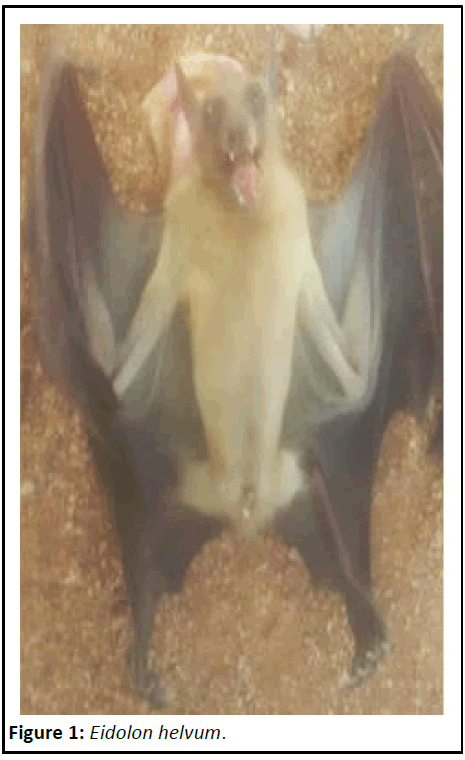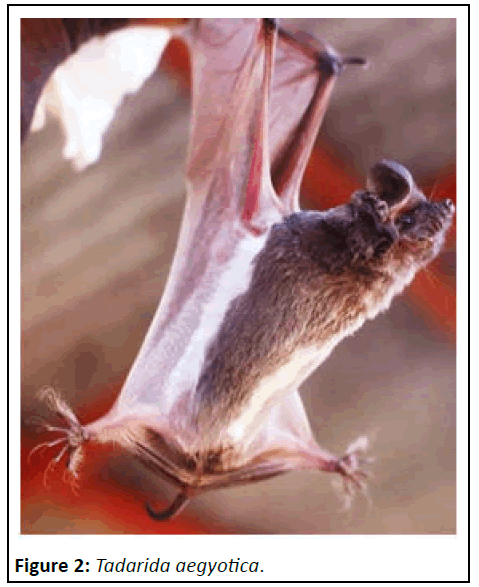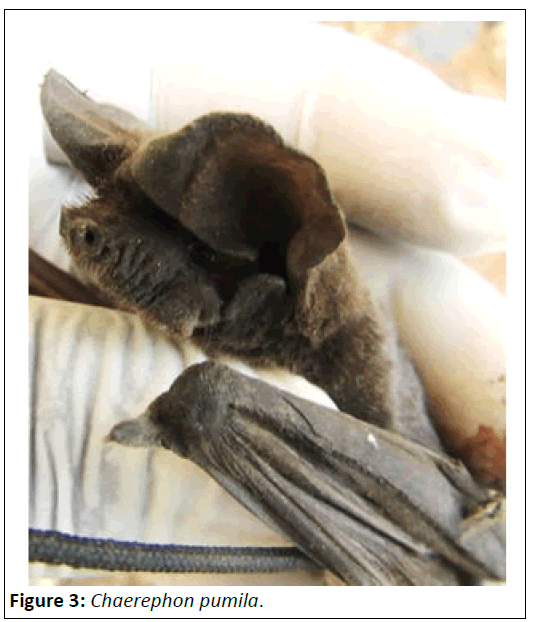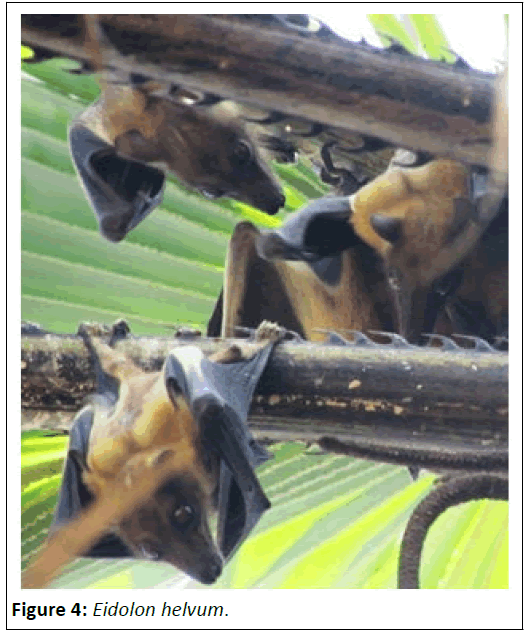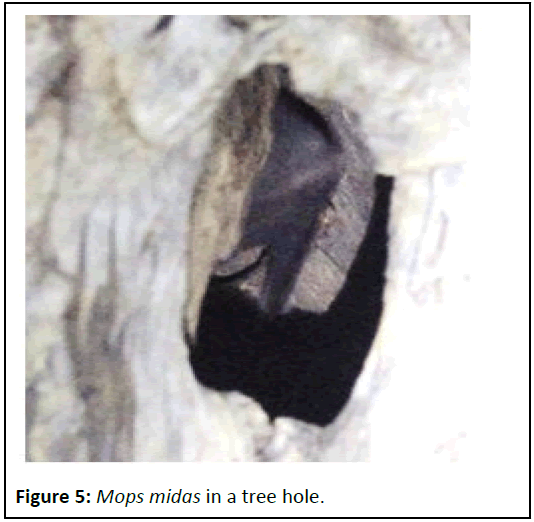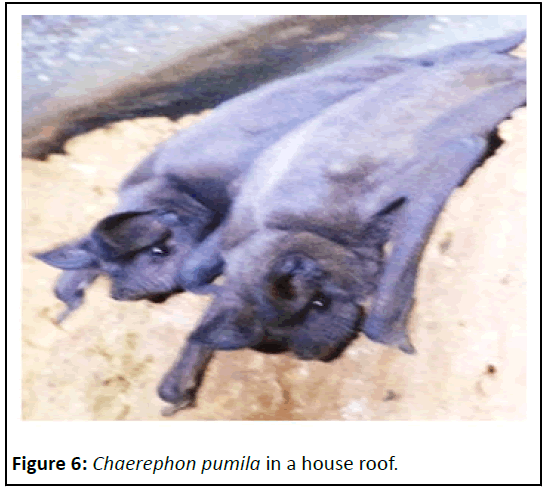ISSN : 2348-1927
Annals of Biological Sciences
Seasonal Abundance of Chiropteran of Jebel Al Dayer Biosphere Reserve, North Kordofan State
Zuheir N Mahmoud1*, Mohamed A Abd El-Rahman3 and Mohamed AA Salih2
1Department of Zoology, University of Khartoum, Khartoum, Sudan
2Department of Zoology, University of Khordofan, El Obeid, Sudan
3Department of History, University of Khartoum, El Obeid, Sudan
- *Corresponding Author:
- Zuheir N Mahmoud
Department of Zoology,
University of Khartoum,
Khartoum,
Sudan;
Email: zuheirnm@hotmail.com
Received: April 26, 2023, Manuscript No. ABS-23-16506; Editor assigned: May 02, 2023, PreQC No. ABS-23-16506 (PQ); Reviewed: May 16, 2023, QC No. ABS-23-16506; Revised: May 17, 2023, Manuscript No. ABS-23-16506 (R); Published: June 14, 2023, DOI: 10.36648/2348-1927.11.4.81
Citation: Mahmoud ZN, Rahman MAAE, Salih MAA (2023) Seasonal Abundance of Chiropteran of Jebel Al Dayer Biosphere Reserve, North Kordofan State. Ann Bio Sci Vol.11 No.4:81.
Abstract
The Jebel Al Dayer (3,715 km2) richness in flora and diversity in fauna lead to its declaration as a national park in 2010 and it became a UNESCO's world biosphere reserves in 2017. One hundred and twenty days of fieldwork resulted in the capture of 7,067 bats belonging to 9 species, 6 genera and 5 families were encountered in JDBR. Tadarida aegyptiaca and Mops midas were recorded in all season. Eidolon helvum, Rhinopoma microphylum, Coleura afra, Taphozous perforates, Chaerephon pumila and Pipistrellus kuhli were found during autumn. The highest number of specimens found was 3151 R. microphylum and the least was a single specimen of C. afra seasonally wise, autumn, winter and summer scored 4970, 1183 and 463 specimens, respectively. JDBR bat species are least concern and/or for which there are no identifiable risks.
Keywords
Biosphere; Mammalians; Wild; Con licts; Biosphere reserves
Introduction
Jebel Al Dayer Biosphere Reserve (JDBR) lies between 12°26' and 12°44'N and 30°39', 30°65'E in North Kordofan state. According to Whiteman (1971) the mountain is a massive volcanic rock mountain of different height peaks. The mountain rises over 1,451 m ASL. The area was declared as a national park in 2010 (Adam, 2021) and was added to UNESCO'S World network of biosphere reserves in 2017 [1]. JDBR is composed of dry savannah woodland, forest ecosystems with five permanents and nine temporary streams. There are 16 major and 46 miner villages in JDBR [2]. Despite the JDBR importance in conservation, its amphibians, reptiles and bats remains neglected. According to list of mammals of Sudan, there are 230 species of mammal with chiropteran represented by 46 species. Bats are the second largest mammalian order with an almost worldwide distribution [3]. Knowledge of bat diversity in hindered by inefficient sampling techniques [4].
Setzer studied wild mammals of Sudan including bats while Koopman confined his study on bats of the Sudan. Koopman found 66 bats species occurring within the boundaries of the Sudan, whereas some 38 others chiropteran species are known from nearby areas and transgress the borders extending their range of occurrence [5]. In their lists of wild mammalian species of JDBR neither Abdelhamid nor IFAD paid attention to the prevailing chiropteran species [6]. Decher et al. recorded 26 bat species belonging to seven families, including one species new to science based on molecular and morphological in Simandou mountain range of Guinea. Fils et al. recorded 21 bat species in disturbed and undisturbed forest habitat in Western Cameroon [7].
Case Presentation
Collection of bats
The bats were seen by the eyes and/or a binocular of the type (Bushnell 16 × 52 66 m 8000 m). Bats were collected by hands after wearing thick gloves or by a butterfly net [8]. The study started on 15.11.2021 to 20.10.2022 and covered winter, summer and autumn seasons. The fieldwork extended for 40 days during each season [9].
Counting of bats
Counting of bats was facilitated by a digital counter. Bats were counted by season and in five habitats (school roofs, caves, house roofs, tree branches and tree holes). Cracks within rocks were not accessible for investigation and counting [10].
Photography
Bats were photographed by a digital canon camera (EOS 700 D, 18 mm-55 mm) fitted with a zoom lens 450 mm-800 mm and a Samsung grand 2 mobile [11].
Species identification
The bat species were identified following Tilde, Patterson and Webala and Happold and Happold and Jonathan [12].
Results
A total of 7,067 bat specimens were collected from JDBR during this study. These belonged to 9 species, 6 genera, 5 families and one order [13].
Tadarida aegyptiaca and Mops midas were recorded in all season. Eidolon helvum, Rhinopoma microphylum, Coleura afra, Taphozous perforates, Chaerephon pumila and Pipistrellus kuhli were found during autumn [14]. The highest number of bat specimens found was 3,151 belonging to R. microphylum and the least was a single specimen of C. afra. Seasonally wise, autumn, winter and summer scored 4,970, 1,183 and 463 specimens, respectively. The greater mouse-tailed bat (R. microphyllum) is insectivorous cave dwellers (Table 1 and Figures 1-4).
| Species | Season | Habitat | ||||||
|---|---|---|---|---|---|---|---|---|
| Winter | Summer | Autumn | SR | C | HR | TB | TH | |
| Family: Pteropodidae | ||||||||
| Eidolon helvum | 0 | 0 | 600 | 0 | 0 | 0 | 600 | 0 |
| Family: Rhinopomidae | ||||||||
| Rhinopoma microphylum | 0 | 0 | 3151 | 0 | 3151 | 0 | 0 | 0 |
| Family: Vespertilionidae | ||||||||
| Pipistrellus kuhli | 0 | 0 | 185 | 185 | 0 | 0 | 0 | 0 |
| Family: Emballonuridae | ||||||||
| Coleura afra | 0 | 0 | 1 | 0 | 0 | 1 | 0 | 0 |
| Taphozous perforates | 0 | 0 | 7 | 0 | 7 | 0 | 0 | 0 |
| Family: Molossidae | ||||||||
| Chaerephon pumila | 0 | 0 | 211 | 198 | 0 | 13 | 0 | 0 |
| Chaerephon chapini | 3 | 6 | 0 | 0 | 0 | 9 | 0 | 0 |
| Tadarida aegyptiaca | 1126 | 435 | 824 | 2385 | 0 | 0 | 0 | 0 |
| Mops midas | 53 | 42 | 64 | 0 | 0 | 0 | 0 | 159 |
Note: SR=School Roofs; C=Caves; HR=House Roof; TB=Tree Branches; TH=Tree Holes
Table 1: Distribution of chiropterans (Bats in JDBR according to season and habitat).
Bat habitats
The distribution of Chiropteran species in the different habitat of JDBR indicated distinct niches or co-existence. Three chiropterans’ species were confined to specific habitat. These were E. helvum (600 specimens) in trees branches, R. microphylum (3,157 specimens) in caves and Mops midas (159 specimens) in trees holes (Figure 5). Chaerephon pumila exist in school (3,128 specimens) and house roofs (23 specimens) (Figure 6). Chaerephon pumila was found to co-exist with T. aegyptiaca and P. kuhli in school roofs. In house roofs C. afra, C. pumila and Chaerephon chapini co-exist.
Risks facing bats of JDBR
Risk factors threatening chiropterans of JDBR included destruction of roofs by wind action which hostile C. pumila, and T. aegyptica), locked houses which threatens C. afra, C. pumila and C. chapini, filling the holes of M. midas and intentional killing in 50% of the cases due to its bad smell in residential surroundings and school’s buildings. Wildfires destroys large populations of bats. Bat species are at least concerned and/or for which there are no identifiable risks leading to extinction.
Discussion
The present study collected 7,067 specimens of bats from JDBR. These belonged to 9 species, 7 genera, 5 families and one order. The IUCN recorded 188 wild mammal species from Sudan. Out of which three are critically endangered, five are endangered, 11 are vulnerable and nine are near threatened, no bat species was included. This list needs to be updated after separation of Southern Sudan. The bat species found in JDBR during this study are least concerned and/or for which there are no identifiable risks. Due to sampling limitations no attempt was made to relate bats abundance to elevation. However, some African studies related species diversity of bats to altitudinal gradients. The bat P. kuhli is known only from the north and southeast and C. pumila was found in the sixth cataract by Mahmoud both were found in JDBR during this study. Some bats are difficult to access as they take shelter in deep rock cracks.Mongombea et al. (2019) found E. helvum (Pteropodidae), M. nanulus and Chaerephon sp. (Molossidae) and Vespertilionidae on Mount Cameroon. These were found in JDBR during this study indicating a wide geographical range of their occurrence. This study suggested encourage use of bat guano as an excellent and free organic fertilizer and build suitable shelters for bats away from villages.
References
- Curran M, Kopp M, Beck J, Fahr J (2012) Species diversity of bats along an altitudinal gradient on Mount Mulanje, southern Malawi. J Tropic Ecol 28: 243-253.
- Abdelhamid SM (2000) Assessment of biodiversity in J Ed Dayer, North Kordofan, WRC Report, 7.
- Adam SEA (2021) Birds fauna of Jebel El Dayer national park-Sudan. Israa Univ J Appl Sci 5: 87-101.
- Decher J, Hoffmann A, Schaer J, Norris RW, Kadjo B, et al. (2015) Bat diversity in the simandou mountain range of Guinea, with the description of a new white-winged vespertilionid. Acta Chiropterologica 17: 255-282.
- Fils EB, Mongombe A, Manfothang DE, Gomeh-Djame A (2021) Patterns of bat diversity in undistrubed forest and forest mosaic habitats of the afromontane forest biome of Western Cameroon. Front Ecol Evol 5-6.
- Hoffmann A (1999) Habitat use and population dynamics of small mammals in the grasslands of Queen Elizabeth National Park, Uganda. Doctoral Dissertation Braunschweig Techn Univ Diss.
- Happold M, Happold DCD (2013) Mammals of Africa. London: Bloomsbury.
- Koopman F (1975) Bats of the Sudan. Bull Am Mus Nat Hist NY 154: 353-444.
- Mahmoud ZN (2023) A guide to field work: The sabaloka area as a Model.
- Mongombea AM, Filsa DEB, Tamesseb JL (2019) Diversity and altitudinal distribution of bats (Mammalia: Chiroptera) on Mount Cameroon. Tropic Zool 32: 166- 187.
- Patterson BD, Webala PW (2012) Keys to the bats (Mammalia: Chiroptera) of East Africa. Fieldiana Life Earth Sci 2012: 1-60.
- Setzer HW (1956) Mammals of the Anglo-Egyptian Sudan. United State National Museum, Smithsonian Instit 106: 448-583.
- Weier SM, Valerie MGL, Gaigher I, Patrick JCW, Taylor PJ (2016) Changes of bat species composition over altitudinal gradients on northern and southern aspects of the Soutpansberg mountain range, South Africa. Mammalia 81: 49-60.
- Whiteman AJ (1971) Geology of the Sudan Republic. Oxford University Press.
Open Access Journals
- Aquaculture & Veterinary Science
- Chemistry & Chemical Sciences
- Clinical Sciences
- Engineering
- General Science
- Genetics & Molecular Biology
- Health Care & Nursing
- Immunology & Microbiology
- Materials Science
- Mathematics & Physics
- Medical Sciences
- Neurology & Psychiatry
- Oncology & Cancer Science
- Pharmaceutical Sciences
